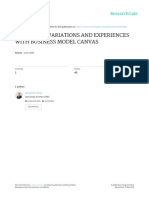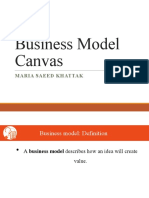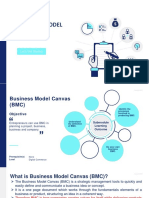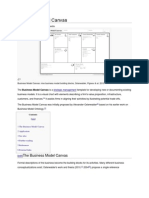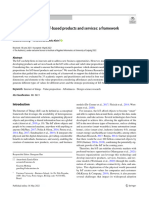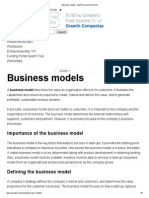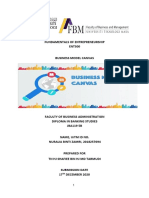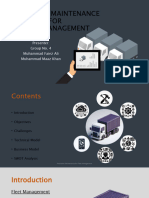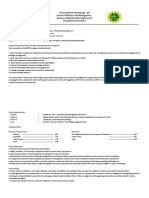A Business Model Canvas (BMC) was developed by Alexander Osterwalder as a strategic management
tool help businesses clearly define and visualize, develop, and refine a business model. It provides a
structured way to analyze how a company creates, delivers, and captures value.The BMC is
particularly useful for startups and innovators since it enables companies and entrepreneurs to
test and refine ideas quickly. It also helps identify strengths, weaknesses, and opportunities of a
business.
2.
In today’s fast-changing business world, having a clear and structured plan is essential for success. The
importance of the Business Model Canvas lies in its ability to provide clarity, enhance strategic focus,
promote adaptability, facilitate communication, and aid in decision-making. One of the biggest benefits
of the Business Model Canvas is its simplicity. Unlike complicated business plans, the BMC fits
everything on one page, making it easy to understand. Many businesses fail because they try to do too
many things at once. The BMC helps businesses focus on the most important aspects, such as who their
customers are, what they need, and how to provide value to them. By using the BMC, businesses can
avoid distractions and make better decisions.
3.
The five types of channel phases are Awareness, Evaluation, Purchase, Delivery and After Sales.
Awareness is about attracting attention and making potential customers aware of the business.
Evaluation is about customer’s research and compare products before making a purchase decision.
Purchase phase focuses on making the buying process easy and smooth. Delivery phase ensures the
product/service is delivered efficiently and meets customer expectations. And last, the After Sales phase
focuses on customer retention, satisfaction, and loyalty.
4.
The Business Model Canvas (BMC) is a widely used tool for designing, analyzing, and refining business
models. However, while the BMC is an effective framework, it has several limitations that can make it
insufficient in certain situations. One of the primary limitations of the BMC is that it simplifies business
planning to fit within a single-page framework. While this makes the model easy to understand, it also
means that important details may be overlooked. BMC provides only a snapshot of a business at a
specific point in time but does not account for changes over time. Business models evolve due to
market trends, technological advancements, and consumer behavior changes, yet the BMC does not
provide a way to map out long-term strategies or growth phases. The BMC is best suited for traditional,
single-sided business models but struggles with more complex business structures, such as platform-
based businesses, multi-sided marketplaces, and decentralized models.
5.
�Starting a business is exciting, but it can also be challenging. Many entrepreneurs struggle to organize
their ideas and ensure their business will succeed. The Business Model Canvas (BMC) is a tool that helps
businesses structure and improve their ideas by breaking them into nine key parts. These parts include
things like the customers, revenue, costs, and value of the product or service. By using the BMC,
businesses can identify weaknesses, find new opportunities, and create a stronger plan for success.























